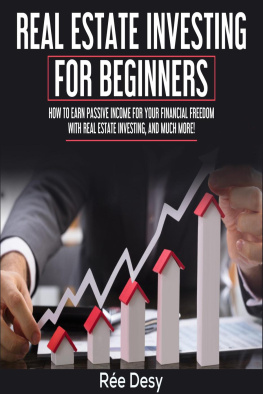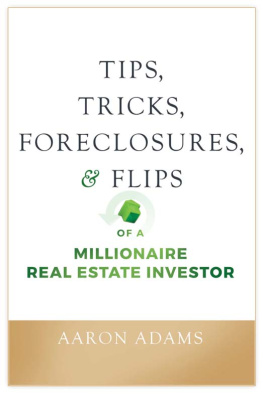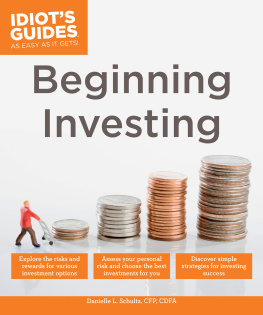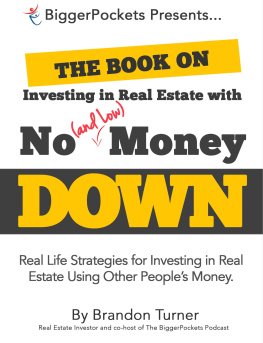| The Battle for Investment Survival |
| G. M. Loeb |
| Simon and Schuster & Rddler (2014) |
|
| Tags: | Business & Economics, Personal Finance, General |
| Business & Economicsttt Personal Financettt Generalttt |
A reader of one of my earlier discussions asked-"Have you ever tried out the ideas outlined in your book?" My reply was to the effect that the ideas were tried out first, and the book written afterward. Any earner who earns more than he can spend is automatically an investor. It doesn't matter in the slightest whether he wants to be or not, or even whether he realizes that he is investing. Storing present purchasing power for use in the future is investing, no matter in what form it's put away. Some popular and common forms include money itself, government bonds, savings bank deposits, real estate, commodities, securities of all types, diamonds and where and when it's legal, gold.
THE BATTLE FOR INVESTMENT SURVIVAL
by Gerald M. Loeb
Fraser Publishing Company Burlington, Vermont
All rights reserved. No part of this book may be reproduced in any manner whatsoever without written permission of the publisher except in the case of brief quotations to be used in critical articles or reviews.
This ePub is created by 'The Rddler' and 'Cadzbuddy'
1935, 1936, 1937, 1943, 1952, 1953, 1954, 1955, 1956, 1957, 1965 BYG.M. LOEB
ORIGINALLY PUBLISHED BY SIMON AND SCHUSTER, INC. 630 FIFTH AVENUE, NEWYORK 20, N.Y.
LIBRARY OF CONGRESS CATALOG CARD NUMBER: 57-12506 MANUFACTURED IN THE UNITED STATES OF AMERICA NINETEENTH PRINTING
1988 edition published by FYaser Publishing Company, a division of FYaser Management Associates, Inc. Box 494, Burlington, Vermont 05402 with permission of Simon & Schuster 2nd Printing, 1990 3rd Printing, 1992 4th Printing, 1993 5th Printing, 1995
Acknowledgments
Some of the articles contained in the following chapters originally appeared in Barron's, The Commercial and Financial Chronicle, Investor Magazine, Trust and Estates, American magazine, and in the NANA syndicated column, Wall Street Today. A Layman Looks at Building first appeared in the Architectural Fbrum.
The chapter I Dont Sell People Buy from Me, is from Hoiv I Made the Sale That Did the Most for Me, compiled and edited by J.M. Hickerson, Prentice-Hall, Inc., 1951.
Library of Congress Catalog Card Number: 88-081705 ISBN: 0-87034-084-0
Cover design by S.L. White
Printed in the United States by Braun-Brumfield, Inc.
CONTENTS
| Qualities of the Good Investor or Investment Adviser | |
| Gaining Profits by Taking Losses | |
| You Cant Forecast, but You Can Make Money | |
| Strategy for Profits | |
| The Ever-Liquid Account | |
| A Realistic Appraisal of Bonds | |
| Merits of Mining Shares | |
| Diversification of Investments | |
| Travel as an Education for Investors | |
| General Thoughts on Speculation | |
| Investment and Spending | |
| Investment and Taxation | |
| Investment and Inflation | |
Postscript | |
| Case History Examples | |
| Investment Trust Investing Is Average Investing | |
| Do Tax Losses Mean Savings? | |
| Odd-Lot Investors Arent Always Wrong | |
| What Women Should Know About Stocks | |
| Tip to the Investor: Always Write It Down | |
| What Is Better: Dollars in the Handor in the Bush? | |
FOREWORD
Remember the old saw: Those who can, do. Those who cant, teach or write success stories.
Without for a moment implying that all teachers and authors lack the ability to do the things they teach and write about, the publishers undertook to prove the old adage false by persuading a successful speculator to revise his book in which he tells how he does it.
The author is a seasoned stock broker and the material in this book is distilled from over 40 years of experience in Wall Street, plus knowledge gained from study of the ups-and-downs of thousands of brokerage accounts. But, he is not an ivorytower theorist. He has tested his accumulated knowledge in the hot forge of the market place with millions of dollars of cold cash. His findings are now available to the readers of this book.
Until the stock market debacle of 1929, security-holders were inclined to accord their invested capitalthe life-blood of their economic existenceless attention than they gave to their automobile or teeth. Once a good investment, always a good investment seemed to be their attitude. But Mr. Loeb sets forth the inescapable investment doctrine that eternal vigilance is the price of success and bluntly states that an ideal investment is totally non-existent.
In substance, this book is hard-boiled, realistic, at times unorthodox. It promises no short cuts to wealth; neither does it take the sour grapes attitude that Wall Street is a snare and delusion. Rather it is a succinct, straight-forward, uncompromising revelation of stock market technique and philosophy by one who has been successful enough to make his views worth recording.
INTRODUCTION
The publication of this up-to-date and enlarged edition of The Battle for Investment Survival is due to two factorsthe steady demand for the first hardcover edition, which has sold over 200,000 copies, and the highly complimentary comments made by various readers of that edition. The contents of the hardcover book, which was last updated in 1957, are included here, practically without change. Here and there, as in the case of the 1964 tax revision, text changes have been made. Basically, the philosophy of the book has withstood the test of time. Some of the chapters were written in 1935 and checked in 1943 and 1957 and again now in 1965; they are still as valid as when they were written.











